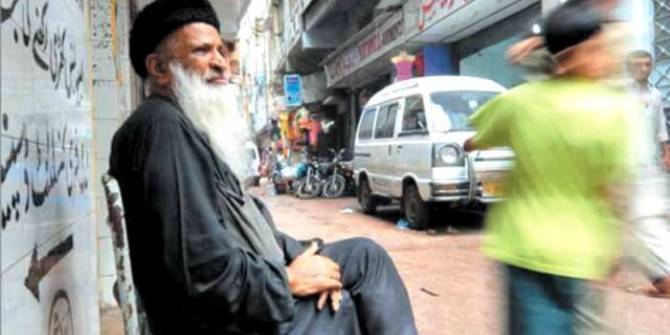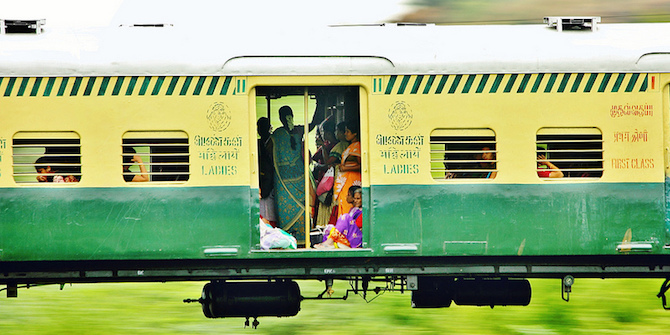In a recent IGC working paper, Viktoria Hnatkovska and Amartya Lahiri examine the gaps between rural and urban India in terms of education attainment, occupation choices, consumption and wages.
A topic of long running interest to social scientists has been the processes that surround the transformation of economies along the development path. As is well documented, the process of development tends to generate large scale structural transformations of economies as they shift from being primarily agrarian towards more industrial and service oriented activities. A related aspect of this transformation is how the workforce in such economies adjusts to the changing macroeconomic structure in terms of their labour market choices such as investments in skills, choices of occupations, location and industry of employment. India over the past three decades has been on exactly such a path of structural transformation.
Literature has also addressed the issue of the redistributionary effects associated with these structural transformations, both in terms of theory and data. The main focus of such research is on the relationship between development and inequality. This work, however, is related to the issue of rural-urban dynamics since the process of structural transformation implies contracting and expanding sectors, which in turn implies a reallocation and, possibly, re-training of the workforce. The capacity of institutions in such transforming economies to cope with these demands is a fundamental factor that determines whether the process is smooth or disruptive.
The transformation of India’s economy has also been marked by a significant transformation in the output composition of the country with the agricultural sector gradually contracting both in terms of its output and employment shares. The big expansion has occurred in the service sector. The industrial sector has also expanded but at a far lower pace.
How has the workforce in rural and urban India responded to these shifting aggregate sectoral patterns? Have these changes been accompanied by widening rural-urban disparities or have the disparities between them been shrinking over time? In this working paper, ‘The Rural-Urban Divide in India’, we address these issues by studying the evolution of education attainment levels, the occupation choices, the wage and consumption expenditures of rural and urban workers in India between 1983 and 2010. We do this by using data from six rounds of the National Sample Survey (NSS) of households in India from 1983 to 2009-10.
We find, reassuringly, that this period has been marked by significant narrowing of the gaps between rural and urban areas in all of these measures. We have found this period has been marked by a sharp and significant convergent trend in the education attainment levels of the rural workforce towards the levels of their urban counterparts. This process has also been accompanied by some convergence in the occupation choices being made in the two sectors. Specifically, the contraction in agrarian jobs in rural areas that has accompanied the ongoing structural transformation of the Indian economy away from agriculture has been met by an expansion of blue-collar occupations jobs (primarily production and service workers) in rural areas at a significantly faster rate than the corresponding expansion of blue-collar occupations in urban areas. This is surprising given the usual priors that blue and white collar occupations are mostly centred around urban locations. As a result there appears to have set in a process of convergence between the rural and urban occupation distributions (even though the absolute differences between the two sectors continues to be large).
We also find some interesting distributional features of the changes in wages and consumption during this period. Specifically, the rural poor (tenth percentile) appeared to have gained relative to the urban poor whereas the rural rich (the ninetieth percentile) failed to keep pace with the urban rich. There is a significant convergent trend in rural wages towards urban levels over this period with the median urban wage premium having declined from 101 per cent in 1983 to 11 per cent by 2010.
A key feature of our findings is that most of the changes in the wage and consumption gaps between rural and urban areas cannot be explained by standard demographic and individual characteristics such as education and age. Changing occupation choices though appear to have played a major role in inducing the shrinking gaps. The tepid contribution of education to the rural-urban gaps stands in sharp contrast to their contribution to gaps between backward castes and others, which too declined during this period.
We also examine the potential effect of an important rural employment programme introduced in 2006 called National Rural Employment Guarantee Act (MGNREGA) on the rural-urban wage and consumption gaps. In order to examine the effect of the programme we use a state-level analysis. Our results indicate that the state-level wage and consumption gaps between rural and urban areas did not change disproportionately in the 2009-10 survey round, relative to their trend during the entire period 1983-2010. We also find that states that were more rural, and hence more exposed to the policy, did not exhibit differential responses of the percentile gaps in wages and consumption in 2009-10, relative to trend. We conclude that the effect of this programme on the gaps was, at best, very muted.
Using data on migration from the NSS surveys, we also relate the convergence trends to migration of workers from rural to urban areas. We find that annual migration flows have declined from 1.2 per cent of the workforce in 1983 to 0.9 per cent in 2007-08. Around a quarter of these flows were from rural to urban areas. Consequently, while the gross flow of workers from rural to urban areas is significant, it is also small relative to the overall urban workforce. We find these migrant workers do earn lower wages than their urban non-migrant counterparts, but the difference is not statistically significant. Overall our results indicate that migration did not play an important role in inducing convergent dynamics between urban and rural areas.
Our broad conclusion from these results is that the market incentives generated by the institutional structure of the country have provided useful signals to the workforce in guiding their choices during this transformative period. As a result, there has been significant churning at the micro levels of the economy. This is a welcome sign, suggesting that economic agents are making the right market-based private choices in terms of their schooling and employment decisions.
For more information on this topic, including in-depth data and analysis, see V. Hnatkovska and A. Lahiri, “The Rural-Urban Divide in India”, International Growth Centre Working Paper, February 2013.









Nice thoughts. Education has gone far away from poor people. I have worked for ASER, the Annual Status of Education Report, which shows the educational level of children in rural villages across India. Here is my journey and my experiences with ASER regarding India’s education system: http://lokkatha.com/150/index.php/education/283-the-joureny-of-aser-2012